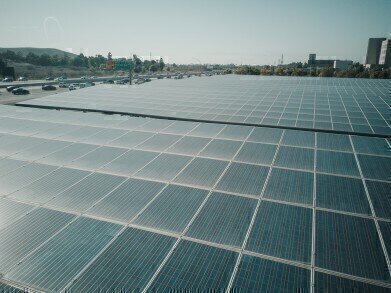Environmental Laboratory
Are We on the Cusp of a Solar Revolution?
Feb 21 2016
Over the last 10 years or so, solar power has enjoyed a surge in popularity. More advanced technology, along with industry competition, has led to a fall in prices, which has coincided nicely with governmental incentives to pursue greener energy sources. As a result, more and more homeowners across the UK have invested in solar panels on the roofs of their homes as a means to reduce their carbon footprint.
While such a trend is certainly an encouraging one, solar panels are by no means the finished article. In fact, the silicon cells which dominate the solar panel market are fairly expensive and highly inefficient, only converting around 16% to 20% of the total sunlight they absorb into usable energy. However, new forms of solar technology aim to make it more affordable – as well as perhaps more efficient to boot.
Introducing Perovskite Solar Cells
Research was begun on perovskite solar cells back in 2009, which offer an alternative to traditional silicon materials in that they can be constructed out of a variety of different substances. The name refers to their crystalline structure, which is often made out of calcium titanium oxide, but can also be created from a whole host of other materials. This versatility already puts perovskite one up on silicon.
As well as being able to be made from a range of substances, the process which goes into making perovskite cells is also markedly simpler. Silicon cells require intensely high temperatures and complex processes in their production, entailing high overheads. Perovskites, on the other hand, can be manufactured almost at room temperature and with greatly simplified techniques, meaning that production costs are far cheaper.
Of course, perovskites are nowhere near being ready for the commercial market. Scientists may have achieved very positive results when measuring solar power generation efficiency in a laboratory setting – but that is a far cry from real-world conditions. In fact, although perovskites have been cheap and easy to make on a small scale, initial tests to mass produce them have led to defects in the finished product. Clearly, there are some kinks which need working out.
Two Technologies Working in Tandem
Studies are currently ongoing at Stanford University, which according to Michael McGehee, one of the lead scientists on the project, have shown “really, really nice progress at Stanford in just the last couple of months.” If the technology can be developed to a workable level for the wider market, there’s no reason why it can’t become commonplace in the solar power industry.
However, according to McGehee and his team, the aim is not to usurp silicon cell technology – but to work alongside it. That’s primarily because the two different technologies capture sunlight at different wavelengths, so when combined, they can actually complement one another.
Furthermore, by working together, perovskite doesn’t need to feel threatened by its rival. “If silicon gets better over the next 5 to 10 years, that’s not a problem for us — if silicon gets cheaper, that means our tandems will be cheaper, and if silicon gets more efficient, that’s great — it means our tandems will be more efficient,” explained McGehee. “It’s a strategic business view. I think perovskites have a better chance of success partnered with silicon in a tandem than going alone.”
Hopefully, the team at Stanford will maintain their progress in their investigations into a more efficient solar technology, thus paving the way for the continued evolution of light and its role in our society, shaping the way we live, think and care for our planet for generations to come.
Digital Edition
IET 34.2 March 2024
April 2024
Gas Detection - Biogas batch fermentation system for laboratory use with automatic gas analysis in real time Water/Wastewater - Upcycling sensors for sustainable nature management - Prist...
View all digital editions
Events
Apr 22 2024 Hannover, Germany
Apr 22 2024 Marrakech, Morroco
Apr 23 2024 Kuala Lumpur, Malaysia
Apr 23 2024 Kintex, South Korea
Apr 23 2024 Edmonton, AB, Canada


















